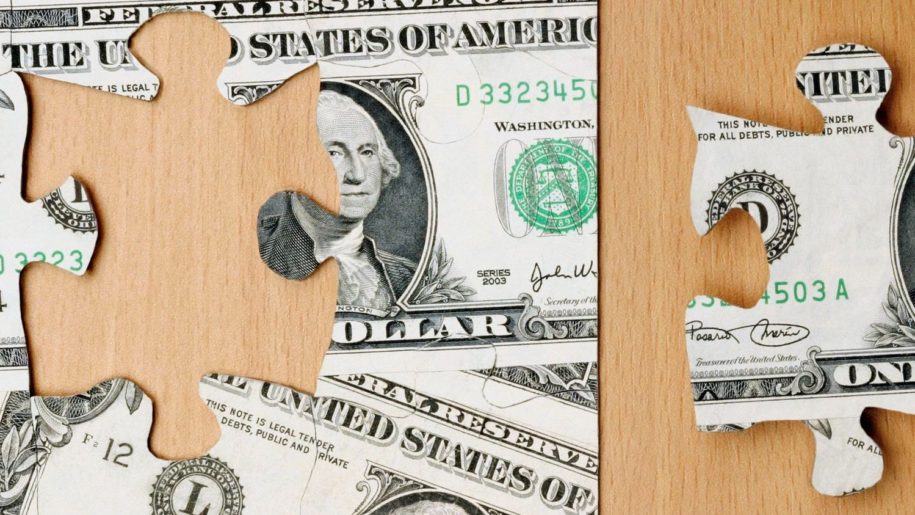What’s a liquidity ratio and what’s considered a good one to have?
This is part of HappyAR’s ongoing AR University series where we help busy company owners and executives get a quick understanding of accounting metrics, financial statements, finance operations, and accounts receivables concepts. Make sure to follow us as we continue to post new guides that can help companies of all sizes.
A liquidity ratio indicates whether your company’s current assets (liquid assets) will be sufficient to meet your short-term obligations when they become due.
This calculation is going to be primarily used by lenders and investors, but it’s also a good way to understand the current financial health of your business. It would be a good idea to periodically run one or more of the common ratios on your own or with your accountant.
What’s Considered a “Good” Liquidity Ratio?

A good ratio will be subjective based on a lot of factors with your business (like age and industry), but anything below 1 is generally considered risky for lenders and investors. Aim for a ratio of 1.25 or higher, but don’t panic if you’re not there. Cost-cutting and accounts payable automation, and accounts receivable automation can rapidly improve your financial ratios, cash flow, and company’s liquidity and can impact your approvals for future borrowings.
Optimizing your accounts payable processes can help ensure cash flow. Automation can help remind clients of discounts in return for quicker payments, accelerate unpaid invoices, prioritize collection efforts for customers with large payment balances, and define weekly cash collection targets. AR software can help you send accurate invoices, provide your team with payment and follow-up visibility, and use the accounts receivable turnover ratio to help you track progress.
This guide includes general industry ratios broken down by year and may be a useful guide to benchmark your business: https://www.readyratios.com/sec/ratio/current-ratio/
A Quick Guide to liquidity ratios:

Before we get into some of the types of liquidity ratios that are used, let’s get some basic definitions out of the way:
Cash equivalents: debt securities with maturities of less than 90 days. Cash equivalents do not include equity or stock holdings because they can fluctuate in value.
Current assets: may include cash, inventory, accounts receivable, marketable securities, supplies, and prepaid expenses.
Current liabilities: financial obligations that are payable within a year, not long-term debt. Examples of current liabilities include accounts payable, short-term debt, dividends, and notes payable as well as income taxes owed.
Liquidity: the ability to cover short-term obligations.
Solvency: ability to pay long-term obligations
Quick assets: assets owned by a company with a commercial or exchange value that can easily be converted into cash or that are already in a cash form.
It’s important to note the difference between a liquidity ratio and a solvency ratio. A solvency ratio includes financial obligations in both the long and short term, whereas liquidity ratios focus more on a company’s short-term debt obligations and current assets. In this article, we’re only focusing on liquidity ratios.
Three Common Liquidity Ratios:

The current ratio, also known as the working capital ratio
Acid test ratio, also known as quick ratio
Cash ratio, also known as cash asset ratio
The current ratio, AKA the working capital ratio, measures your company’s ability to pay off short-term debt obligations with current assets.
The formula for calculating the current ratio is as follows:
Current Ratio = Current Assets / Current Liabilities
Liquidity Ratio Details:

A higher liquidity ratio is generally considered better, and as mentioned before, aim for some margin of safety with at least a 1.25. Anything below 1 indicates an issue with the ability of a company to pay for short-term liabilities and current debts and will likely be a red flag to investors and lenders and should motivate you to make some immediate changes if you’re looking to borrow or raise funds.
The acid test ratio, AKA the quick ratio is more conservative than the current ratio since it removes assets that are most difficult to convert to cash in 90 days: inventory, supplies, and prepaid expenses.
A prepaid expense is a type of asset on the balance sheet that results from a business making advanced payments for goods or services to be received in the future. Prepaid expenses are initially recorded as assets, but their value is expensed over time onto the income statement. Unlike conventional expenses, the business will receive something of value from the prepaid expense over the course of several accounting periods.
The formula to calculate the acid test ratio is:
Acid Test Ratio = (Total Current Assets – Inventory – Supplies – Prepaid Expenses) / Current Liabilities
If you run both the acid test ratio and the current ratio and find the numbers to be way different, that could indicate that you are relying heavily on inventory. Depreciation may also need to be factored in which could change the ratio. This might be a result of the industry you’re in. Retail and manufacturing ratios may be impacted more than professional services and SaaS companies.
What is a Cash Ratio?

Cash ratio, also called cash asset ratio, is the most conservative of the three ratios and looks at the ratio of cash and cash equivalent assets to your total liabilities.
The ratio indicates the extent to which available funds can pay off current liabilities.
The formula for calculating the cash ratio is:
Cash Ratio = (Cash + Cash Equivalent) / Current Liabilities
If the cash ratio is equal to 1, the business has the exact amount of cash and cash equivalents to pay off the debts. If the cash ratio is less than 1, there’s not enough cash on hand to pay off short-term debt.
When your company’s cash ratio is too high, you may be missing opportunities for short-term investments or other growth initiatives.

Follow HappyAR’s AR University for more quick finance learning opportunities, like this one on liquidity ratio analysis, intended for busy executives that are interested in gaining a better understanding of the health of their business and their balance sheet.
HappyAR is a seamless SaaS that quickly and easily boosts your accounts receivables work. We save companies of all sizes thousands of dollars each year by optimizing the speed and efficiency of their collections methods. No more guessing if someone has received an invoice or trusting that it will be paid on time. This is a fully integrated solution that pays for itself over and over each month by preventing defaults and preserving client relationships.
HappyAR is an ever-evolving toolkit that helps optimize your invoice collections process and our solution starts at $0/month and scales up based on your invoice volume. Visit us at www.happyar.com to learn more.

